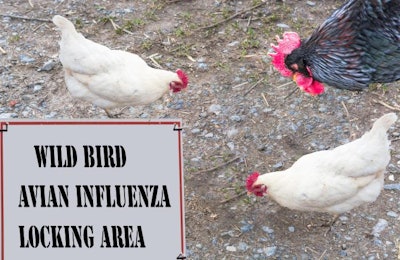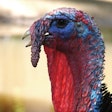
The latest outbreaks of highly avian influenza to be confirmed by the Mexican authorities bring the country’s total since March to 22, with direct losses of poultry already approaching half a million. Two further outbreaks have also been reported in Taiwan.
Four new outbreaks of highly pathogenic avian influenza (HPAI) linked to the H7N3 virus variant have been confirmed in Mexico.
Based on official reports from the national animal health agency to the World Organisation for Animal Health (OIE), infected birds were identified among two backyard flocks in the states of Vera Cruz and Guanajuato, as well as in commercial flocks of broilers and light breeders in Queretaro. Typical symptoms and increased mortalities were observed among the backyard birds and the breeders. No signs were noted among the broilers, which tested positive for the virus as part of the intensive surveillance program.
Since HPAI returned to Mexico in early March of 2019, there have been 22 HPAI outbreaks in eight central states, and the number of birds lost to the disease directly through mortality or culling already exceeds 476,000. The latest cases include the first in Vera Cruz, and the most affected state is Queretaro, with eight confirmed outbreaks reported to the OIE.
This apparent resurgence of HPAI in Mexico is seen as a consequence of positive changes in attitude in both the reporting the disease, and the response by the authorities. The current approach — involving intensive surveillance for the virus, improved farm biosecurity, and the authorization of vaccination — is more likely to lead to the eradication of the infection from the sector than the previous lack of transparency, according to the Mexican poultry industry association, UNA.
Two more HPAI outbreaks in Taiwan
Confirming previous local media reports, Taiwan’s Council of Agriculture has reported to the OIE two new outbreaks of HPAI in poultry linked to the H5N2 virus variant. Latest to be affected were a flock of around 1,500 meat ducks in Changhua county, and almost 23,000 native chickens in Yunlin. These latest cases bring the counties’ outbreak totals so far this year to 12 and 25, respectively.
The virus was detected in the duck flock as the result of surveillance, while almost 300 of the chickens died before the infection was confirmed. Both locations have been depopulated, the carcasses destroyed, and thorough cleaning and disinfection have been carried out. Poultry within 3 kilometers of the outbreaks will be subject to intensive surveillance for the next 3 months.
View our continuing coverage of the global avian influenza situation.

















